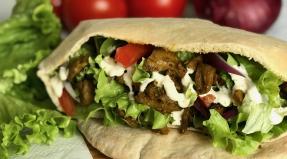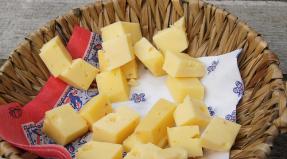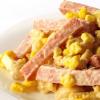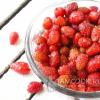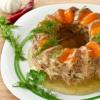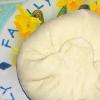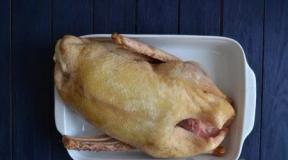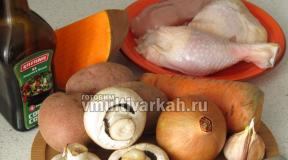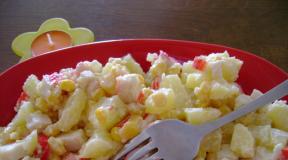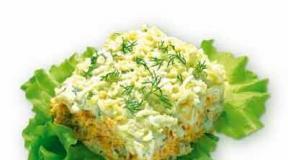Crispy pickled cucumbers in jars as cask. Pickled cucumbers in jars as barrel
In order for pickled and salted vegetables to be present in the winter menu, you need to spend a total of a day or several days (depending on the volume!) Canning and salting in the autumn-summer season. In fact, you need to spend a little time, because the recipes that we will try to cook today are very simple, but they will delight you with amazing taste. If you like to add pickled cucumbers to dishes and use as a simple snack for a side dish, as barrel-cooked (cold-cooked), then you will certainly be interested in the following ways to cook them.
Preserving cucumbers for the winter
Delicious pickles on your table
Each housewife probably has her own signature recipe, which she uses year after year to preserve cucumbers. It is incorrect to call any one cooking method correct and ideal, because different seasonings, dosages are used and, in the end, the technological process is different.
Cucumbers can be salted whole, or can be cut into strips or circles. They attract with their exquisite, spicy taste and crunch, retain their color and are a great addition to salads, side dishes and even such hot dishes as hodgepodge. A barrel for salting in an apartment is not always appropriate, and if there are no other utility rooms, then there is simply nowhere to place it. Therefore, we will use ordinary glass jars, but cook according to such a recipe so that the taste of cucumbers turns out like real ones from a barrel.
Cask pickles recipe (cold way)
We need 2 kilograms of cucumbers, several umbrellas of dill, 23 pieces of leaves from blackcurrant or cherry bushes (you can cut them in half). Do not forget to cook a couple of cloves of garlic and peeled horseradish root. This method uses vodka, don't let that surprise you. It is in this case a preservative, and we use it quite a bit.
Well-washed cucumbers should first be poured over with boiling water, then put in a large container and poured with cold water. After two hours, we transfer them to the banks, not forgetting to put herbs and spices between each layer. Fill with cold water, adding two tablespoons of vodka to the jars (tablespoons, of course!). It is not necessary to cork, it is enough to close with plastic lids and put in the refrigerator. Such an appetizer is stored for as long as necessary, but according to the hostesses, it is difficult to hide such yummy from home for a long time.
Young pickles in a cold way (almost cask)
Try to choose small, even-sized vegetables for this cooking method. They should be seedless and have a thin, tender skin. Overripe cucumbers will not work.
For the recipe we take:
1.5 kilograms of fruit per one three-liter jar;
- 2-3 sprigs of dill umbrellas;
- 2-3 leaves of black currant;
- 2-3 oak leaves;
- 2 cherry tree leaves;
- 3-4 cm horseradish root;
- 1 pod of hot hot pepper;
- garlic cloves;
- 40 grams of salt for every liter of water.
We process vegetables before salting. To do this, we wash them under running cold water, and then put them in a container with ice water for 20-30 minutes. This technique keeps the cucumbers crisp and firm after pickling.
While preparing herbs and greens: scald all the leaves with boiling water, do not cut the garlic, leave it in large slices. Three-liter jars can be pre-sterilized in the microwave or in another way convenient for you. Put dill, leaves, horseradish and garlic on the bottom of each bottle. By the way, adding oak leaves is one of the secrets of many hostesses. They know that this will keep the pickles crispy yet tender. But do not get carried away with oak leaves, their overabundance will lead to the fact that the peel will become excessively hard.
The next step is to lay the cucumbers as close as possible to each other. The final touch is hot pepper, but many people prefer not to put it. With it, the appetizer is very spicy. It is necessary to pour vegetables with prepared brine: we prepare it by adding 40 grams of table salt for each liter of cold water. Stir the composition well so that no undissolved salt remains. Immediately fill all jars to the very top, cucumbers can absorb a lot of marinade. Cover the containers with gauze bandages, leave in the room on the table for 3-4 days.
Gradually, you will be able to observe how the contents in the jars become cloudy, and sometimes a mold layer forms at all. This should not scare you, it means that everything is cooked correctly! If you cook such cucumbers in large quantities, then several cans can be rolled up for long-term storage. To do this, drain the marinade from them, remove the formed mold. Bring to a boil, pour into bottles and roll up very quickly.
What remains uncorked, put in the refrigerator, such cucumbers can stand for a month or more. They can be served with cereals, potatoes, meat, added to snacks and salads. This dish can be safely called a traditional snack of any winter feast.

The process can be conditionally divided into two stages: sourdough and canning. You can preserve cucumbers on the fourth day, but it is better to wait until the fifth or sixth day.
- 5-6 kg of young cucumbers;
- horseradish leaves, a handful;
- dill umbrellas 8-10 pieces;
- cherry leaves - 4-5 pieces;
- 5-6 garlic cloves;
- 3 tbsp salt.
Tails are cut off cucumbers and soaked in a basin of water for 2 hours. Prepare the greens - washed under water and dried on a towel.
In a wooden barrel with a capacity of 8-10 liters, half of the harvested greens, garlic and cherry leaves are placed on the bottom. Cucumbers are placed on top in rows, and then again e laziness.
Salt is dissolved in cool water (4 liters). Pour the brine into a bucket, shake the contents a little. It is desirable that the cucumbers are under water. A plate with a load or oppression is placed on top of the bucket and the vegetables are left to sour for two days at room temperature.
When time passes, the cucumbers are removed from the brine, but not washed, but immediately placed in a clean container for further storage. The brine is filtered through gauze to remove foam and herbs, poured into a saucepan and brought to a boil. Then poured into jars with cucumbers to the very top.
In a saucepan filled with water, put jars of cucumbers and turn on the heat. Sterilized within half an hour. Then the jars are rolled up with tin lids, cooled and stored in a dark place.
For pickling cucumbers, you can take an enameled bucket or basin.
With horseradish and garlic

You can dilute the sour taste of pickled cucumbers by adding a sharp note in the form of horseradish and garlic. They will add spice to the appetizer. Cucumbers are harvested directly in jars.
Ingredients:
- 2.2-2.5 kg of cucumbers;
- horseradish root - 2-3 pieces;
- horseradish leaves 5-6 pieces;
- a handful of peeled garlic cloves;
- on the start of dill and parsley;
- 3 tbsp rock salt;
- 4-5 oak leaves.
In a three-liter jar, half of the total volume of garlic, herbs and leaves is placed at the bottom. A horseradish root is chopped with a knife and ½ of it is sent to the rest of the contents of the jar. Cucumbers are placed vertically in a container, and greens, garlic, leaves and the remains of horseradish are laid on top of them with the last layer.
Salt is dissolved in 3 liters of cool water. Pour the contents of the jar with brine, and put it in a warm room for fermentation. It is not necessary to cover with a lid, you can cover it loosely with a saucer.
When fermentation is in full swing, then remove the foam from the workpiece. On the sixth day, the brine is poured into a container and put on fire to boil. The boiled mixture is poured back to the cucumbers and sterilized in the oven for 10-15 minutes. Then close the jar with a lid and let it cool. After cooling, the snack is removed in the refrigerator.
A simple recipe for pickled cucumbers for the winter

For 5 days, you can ferment cucumbers using the simplest method. When harvesting, it is better to use spring water - it has a low hardness and has a high degree of purity.
Ingredients:
- 1.5 kg of young gherkins;
- 1.5 liters of water;
- 2 tbsp salt;
- 4-5 peas of allspice;
- garlic head;
- 5-6 dill umbrellas.
In a small, deep saucepan put a couple of dill umbrellas, 3-4 cloves of garlic and peppercorns.
Cucumbers are washed under water, the tails are cut off from them and sent to the pan.
Dip a tablespoon of salt into the water and stir it until completely dissolved. When the salt dissolves, pour the brine into the pan.
A plate is placed on top of the cucumbers, and a liter jar of water is placed on top. Leave the gherkins to sour for 3-4 days.
After the time has passed, the cucumbers are taken out of the pan and transferred to jars. The brine is filtered through gauze and boiled. Taste - if there is not enough salt, you can add another teaspoon.
Pour brine over cucumbers. Banks must be sterilized in boiling water for 20 minutes, only then they are rolled up with lids and put away for storage. You can try cucumbers after 2-3 weeks.
Attention!
You can understand whether the fermentation process has ended or not by the bubbles that appear on the surface of the brine. If there are a lot of bubbles, then fermentation is in full swing. In this case, the cucumbers are left to ferment for another day or more.
with spices

You can add flavor to pickled cucumbers with the help of allspice, cloves, coriander, bay leaf. All these spices only enhance the taste of vegetables, make it more saturated and pleasant. The composition of spices can be changed at your discretion.
Ingredients:
- 1.8-2 kg of gherkins;
- 2 tbsp salt;
- 2 liters of water;
- 5-6 peppercorns;
- ½ tsp coriander;
- 3-4 pcs. bay leaf;
- 2-3 pcs. carnations.
Coriander, cloves and pepper are placed in a jar with a capacity of 2-2.5 liters. The bay leaf is broken into several pieces and sent to the contents of the jar.
Cucumbers are soaked in water for at least an hour, then the tails are cut off from the fruits and placed standing in a container.
In a separate container, salt is mixed with water, then the mixture is poured over the cucumbers. The contents of the jar are left to sour in a warm room for 5-6 days.
When fermentation stops, pour the brine into a saucepan and bring it to a boil a couple of times. Then pickled cucumbers are poured with a hot mixture and the jars are immediately rolled up. After cooling, the workpiece can be stored in a dry, cool place.
with mustard

Another favorite ingredient in sourdough cucumbers is mustard, which gives the fruit its characteristic astringency. You can not add mustard, the taste of vegetables does not deteriorate at all.
Ingredients:
- 2 kg of cucumbers;
- half hot pepper;
- ½ tsp mustard;
- 4-5 dill umbrellas;
- 3-4 garlic cloves;
- horseradish leaves, 2-3 pcs.
- 2 tbsp salt;
- water - liter.
Ingredients are prepared: pepper is cut into cubes, horseradish leaves are torn into several small pieces. If the garlic cloves are large, cut them in half. Prepared ingredients are placed in a saucepan.
Cucumbers are soaked for an hour in water, washed well and cut off the tips. Transfer fruits to a bowl.
Salt and mustard powder are dissolved in a liter of water. Mix the contents well and pour into a saucepan. Close the cucumbers with a plate, put a load on it and leave the contents to ferment for 5-6 days.
Pickled cucumbers in jars is a fairly common recipe in our time. After all, barrels with cabbage, cucumbers, tomatoes, even in the village have long sunk into oblivion, and memories of that half-forgotten taste of pickles without vinegar remained. I already, the differences are small, because the technology and the goal are the same: to get lactic acid fermentation, as a result of which lactic acid is formed. She will help us save cucumbers without using vinegar.
Today we will make a pickle using a dry mixture of spices for pickling cucumbers. Calculation for 1 liter jar.
So, for the preparation of pickled cucumbers in jars (like barrel ones), we will prepare all the products according to the list.
Cucumbers take strong, small. Wash them well. Hold in cold water for 2-3 hours, as always, so that the air leaves the fruit. Cut off the ends.

Boil the brine, pour salt (a spoon without a slide) and spices into the water.

Fold the cucumbers in a sterile jar, cover with a simple lid and leave in the room for 3 days.

The brine will turn white - this indicates the beginning of the process of lactic acid fermentation. Then the brine will even foam, so it’s better to put the jar in a plate or saucer, although I have never leaked.

Drain the brine into a saucepan. And rinse the cucumbers directly in the jar, or taking it out of it.

Add half a glass of water to the brine and boil.

While the brine is being prepared, pour boiling water over the cucumbers and cover with a sterile lid. You can add a sprig of dill and / or parsley before this.

Drain the water, bring to a boil and pour again.


For the third time, pour cucumbers with boiling brine and immediately roll up the jar.

Send the jar under a fur coat until it cools completely. Pickled cucumbers in jars are ready. You can even store it in the room.

I have never met a person who would be indifferent to all sorts of homemade pickles. And now I'm not talking about the sterilization process and canning, but about a plate of pickled or salty sweets. One can only argue here - someone likes it sourer, and someone likes more sugar.
But pickled cucumbers (not salted and not pickled!), They are also called barrel cucumbers, stand out in a certain way. This is where all lovers of winter sweets from a jar fall into two camps - some love such cucumbers to shivers in their knees, while others, sorry, stink, and generally fu!
I'm among the first! Crispy, vigorous, filled with juice, only such a cucumber is delicious to eat a glass of vodka, and only such a cucumber is worthy of a vinaigrette.
While I was a city girl and had only a refrigerator at my disposal, I often visited the market in a tent from the local state farm - there, in addition to sweet onions and juicy carrots, sauerkraut and real barrel cucumbers were always sold. I bought 10 pieces at once and ate half right in the car, splashing everything around with brine)))
And when we got a cellar, I thought - is it possible to cook the same delicious cucumbers at home?
Of course, at first I tried to get an oak barrel for salting, but then I realized - I started from the wrong side! First of all, you need a recipe! And I got it! All the details of the preparation of barrel cucumbers were told to me by an aunt in the market, from whom I always bought these cucumbers. True, having revealed this secret to me, she lost me as a buyer - after all, now I can make barrel cucumbers and sauerkraut myself)))
Although, I doubtfully wrote down the recipe, but my head was spinning “It can’t be so simple!” Well, it’s true, I couldn’t believe that in order to get such yummy on a plate, cucumbers must first turn sour (roughly speaking, spoil!), And then magically turn into a delicacy!
Indeed, the recipe is so primitive that if cucumbers are already selected, consider that half the battle is done!
Which cucumbers to choose? Of course tasty, strong, without flaws, straight from the garden.
It is believed that cucumbers with a thick skin and black spikes are best suited for pickling and pickling - special pickling varieties (breeders even bred the common Masha variety). Such cucumbers are well stored (last year a couple of buckets quietly stood in the cellar until March), they remain crispy and vigorous.
But gentle, with a velvety fluff - they are better in salads. In salting, they are stored poorly, and if such cucumbers are fermented, then rather quickly they turn into sour soap. Although, if you do not plan to store blanks until spring, you can try this recipe with any cucumbers.
And the size? Yes, when you're making barrel cucumbers, size matters! It has been verified that the larger the cucumber, the more smoothly magical processes take place inside it. Of course, you need to understand that the cucumber has not grown to the size of a zucchini, it has become covered with a thick peel, turned yellow on one side, and inside there are huge seeds, there are simply large-fruited varieties - a cucumber can be at least 30 centimeters in length, but remain juicy, tender and not overripe.
One misfortune with such long cucumbers - what to ferment them in? Here, an ordinary three-liter jar, and a cucumber sticks out of the neck ... And how many such specimens will fit in a jar - three, four?
Therefore, my choice is plastic buckets-containers. They come in different sizes (from half a liter to 12!), with sealed lids, the walls are transparent enough to peep at what is happening inside (it is easy to control the turbidity of the brine and its level), but most importantly, the diameter of the bottom and the neck do not differ much.
This container is four liters. And here is the cucumber that was sticking out of a three-liter jar - yes, you can put at least a dozen of such cucumbers there in a pile!
But it doesn’t matter what variety you choose for pickling cucumbers - they must all be washed and soaked in cool clean water for at least 2 hours, and preferably overnight. Cucumbers will absorb water and “drink” less brine.
In the meantime, let's get on with the tasty accents! We will collect fragrant herbs on the beds - dill (tender twigs and hard stems, flowers and ripe umbrellas), garlic (and heads, and green feathers), horseradish leaves, parsley (whole with roots or only leaves), cilantro (leaves, flowers, green seeds), sprigs of mint, basil, thyme. Don't forget the blackcurrant leaves.
If there are no beds of their own, and the grandmother is far away in the village, then there is a direct road to the market, fragrant “brooms” with everything you need are sold there.
Bay leaves, hot peppers and peppercorns also go well with cucumbers.
It's also a good idea to add cherry leaves. In our region, such a cherry is called a sweet cherry or “cherry on a leg”, its leaves are small, but there is plenty of flavor.
I visited friends at the dacha with garden shears and brought a real cherry bouquet - leaves into blanks, chop the twigs into chips for hot smoking, eat the berry!
By the way, if you didn’t use all the leaves at once, put them in a bag and store in the refrigerator - they lie for several weeks; you can also save the "extra" leaves of blackcurrant and horseradish.
But real cask cucumbers are therefore cask cucumbers - they are with the taste of a barrel, ideally - oak. We will “deceive” - add dry oak leaves to the bucket. Of course, they are not as fragrant as fresh ones, but what can you do if real oaks do not grow here. After all, do we use dry bay leaves in the kitchen?
There are almost no problems with dry oak leaves - you need to buy an oak broom. Just do not buy it in a beautiful package in a supermarket (suddenly it is processed with something or old), look near the city baths - there they always sell brooms made of birch, fir, juniper, and sometimes oak. I know, one uncle is specially brought oak brooms from the Far East.
Such a broom is enough to pickle several buckets of cucumbers and it will remain to take a steam bath))
Well, let me tell you about the salt! Take a large pickling and NOT IODIZED! With iodized blanks do not stand and quickly turn sour.
As you can see, there are more words and theory here, let's get down to business!
Plastic sealed buckets (or glass jars, if you suddenly do it in them) are washed with soda, you do not need to sterilize. The more of the right bacteria left, the better the fermentation process will go.
At the bottom we put a mixture of herbs, a few peppercorns, a horseradish leaf, fill up to half with cucumbers, laying them as tightly as possible. Again a layer of herbs, again cucumbers and more greens on top. We cover with a sheet of horseradish, without fanaticism we ram the contents.
Pour salt on top - 1 tablespoon per liter of container (my buckets of 4 liters each means 4 tablespoons), and fill it with UNBOILED filtered water, you can use it from a bottle, you can use mineral water, you can use spring water, but without bleach. Leave for half an hour and add water if necessary.
We leave the buckets (jars) at room temperature, prudently they need to be put in a bowl, on a large plate or baking sheet - they can leak. Loosely cover with lids or a saucer (from dust and insects), shake a couple of times in the evening so that the salt is distributed faster throughout the entire volume of the brine.
The next day, foam will appear on the surface, someone will say “oh, oh, turn sour!”, But in fact, the process has started!
And after another day or two, the brine will become cloudy - close the lids tightly and put them in the basement or in the refrigerator if you made a small batch. Now the cucumbers should stand at a temperature not higher than 8-10 degrees for a month. Do not store them at room temperature!
Over time, the brine will brighten a little, but still remain cloudy, and bright green cucumbers will turn brown.
As I said, such cucumbers stand until spring, do not turn sour, do not grow moldy, only the taste becomes more vigorous. The hare even joked that he would carry a fork and a stack with him, drink and eat, because there is in the cellar, and going to heat the house is just along the way)))
Enjoy! Have a snack!
Vegetables
Description
Cucumbers salted for the winter, like barrel- a simple and everyone's favorite snack, an excellent addition to fresh dishes on the table in the winter.
With pleasant to the touch, salty taste, crispy and smelling of the spicy smell of summer herbs and oak barrels - it is with such cucumbers, abundantly poured with vegetable oil from roasted sunflower seeds, and a lot of onions that it is pleasant to eat boiled potatoes, peeled and boiled whole or boiled in uniform. Cucumbers prepared in this way can be used in meat and vegetable salads and vinaigrettes, added to pickle or stewed beef.
Such cucumbers, of course, can be bought by walking through the collective farm market, or you can cook them yourself at home and enjoy them all winter, enjoying a delicious addition.
For the preparation of pickles for the winter as a barrel, a barrel is not required. For this purpose, you can use various containers, the main thing is that they are convenient for you and covered with a lid. These can be three-liter jars, ceramic barrels, or plastic buckets that are suitable for storing food. The volume is also important, because the larger it is, the larger the cucumbers, or more of them can be pickled. We use 4 liter buckets. A large amount of spices makes cucumbers fragrant and crispy, and salting by natural fermentation allows you to save all the useful properties of cucumbers.
Pickling cucumbers does not require special skills, they do not need sterilization or wrapping. And one more argument in favor of cooking pickles, like in a barrel, is that fruits of any size are suitable for salting: from gherkins to the largest specimens, and, characteristically, they turn out to be tastier than babies. Our simple recipe with step-by-step photos will help you quickly prepare delicious cucumbers that taste like barrel cucumbers in urban conditions for the winter.
Ingredients
Steps
We select cucumbers, which we will salt in a cold way. All cucumbers will be suitable, but cucumber varieties with a dense skin are considered the most suitable.

The size of the cucumbers is not important, but it is better if the cucumbers are approximately the same size in the same container, which will allow them to be salted evenly. Although pickled cucumbers will not be in any case, even during long-term storage.

Prepare the dishes in which we will pickle the cucumbers. We wash cans, buckets, lids with soda and rinse in a large amount of clean running water. An important condition is that the dishes are without flaws, because the cucumbers will ferment and some pressure will be created inside the cans, and the plastic container must be suitable for use with food.

We choose dishes for pickling cucumbers based on the size of the cucumbers that we will use. It is most convenient to take jars of such a size that the cucumbers feel comfortable in it, and when laying the gaps were minimal. Large gaps help soften the cucumbers, although too tight styling is also undesirable..

Cucumbers that do not fit in jars are more advisable to pickle in a container that will allow the fruits to be placed as tightly as possible in it. We recommend plastic containers with lids.

We carefully wash the cucumbers selected for pickling in warm water, free from ponytails and remnants of flowers. Then we soak in a large amount of cold water for two hours so that the cucumbers gain moisture and do not absorb the brine much during the pickling process.

We sort out the greens and spices prepared for salting, rinse thoroughly, dry on cloth towels and prepare for further processing.

We sort cherry branches with leaves. The resulting products are divided into different containers for the convenience of further bookmarking. We simply tear off the leaves, and chop the branches with bark with garden shears.

With oak branches we do exactly the same as with cherry branches.

Prepare the garlic: peel and cut the cloves into plates.

We wash the hot pepper, and cut into convenient pieces along with the testicles.

Soak the horseradish rhizome in warm water for 20 minutes, then carefully clean it from the remnants of the earth, and cut into thin slices.

When all the ingredients are ready, we begin the bookmarking process. Dill sprigs, cilantro, parsley, basil, horseradish leaf, blackcurrant leaf, thyme and mint will be laid without chopping.

At the bottom of the prepared dishes we put half of the prepared greens and chopped twigs, chopped horseradish and garlic, black peppercorns, bay leaf.

Lay cucumbers on top and cover with the rest of the greens.

Sprinkle coarse kitchen salt.

Fill with clean, very cold water. Ideally, it should be well, or cleaned. The main thing is not tap water, since the chemicals used in water treatment adversely affect the pickling process and the taste of cucumbers. We try to pour water slowly, and always so that it carries away the salt. Cover with a lid, but not tightly. We leave the cucumbers in a room at room temperature until the fermentation process begins.

We put the filled container on plates or pallets, because the buckets will begin to leak during the fermentation of cucumbers. This will happen within the first two days..

After a day, foam will appear on the surface of the brine. This starts the process of natural fermentation. The cucumbers started to sour.

Over the next two days, the water in the cucumbers will begin to become cloudy and a characteristic smell of souring will appear.

Tightly close the lids on the buckets. We take cucumbers to the basement. There they should be about a month to complete the fermentation process. The brine will brighten at the top of the bucket, and the more cloudy one will sink down. Fully salted cucumbers will acquire a brown color and a characteristic smell of barrel cucumbers. If you see all this with your own eyes, then the pickled cucumbers are ready.

This completes all preparations. Cucumbers pickled in this way for the winter are well preserved until the end of next spring, while remaining crispy and fragrant.

Bon Appetit!
